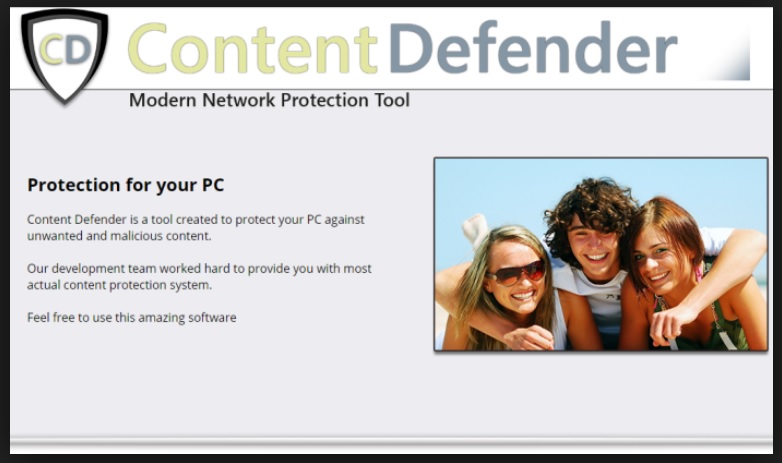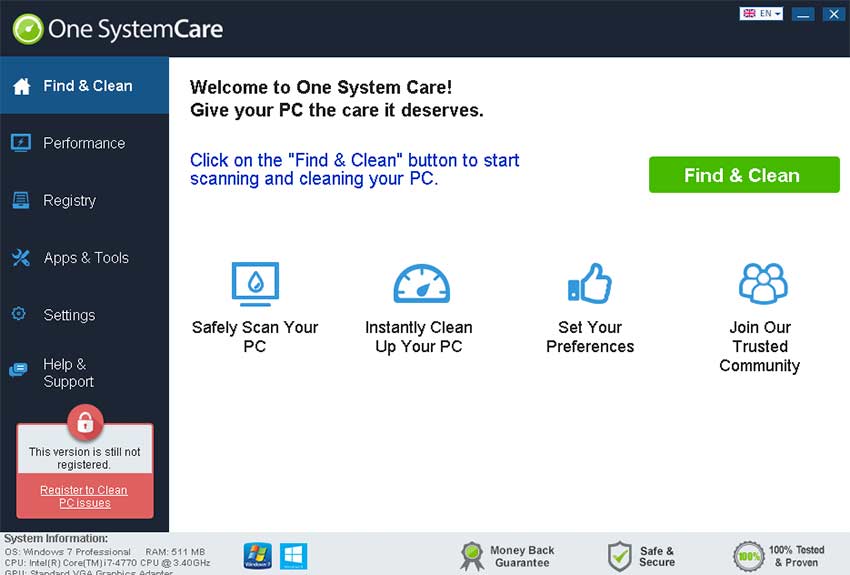I wrote this article to help you remove Content Defender. This Content Defender removal guide works for all Windows versions.
In case your PC screen gets suddenly flooded with tonnes of commercial pop-up advertisements, it is a clear sign that a malicious application is present on your system. Such program is Content Defender and similarly to many other potentially unwanted programs (PUPs), it’s been classified as a typical advertising-supported application.
Because of being categorized as PUP, no one needs to have Content Defender on her/his computer. One of the main reasons to be classified as a potentially unwanted program is the ability of Content Defender to enter the system without asking for any permission. Besides, the fact that there is no guarantee that the services provided by the application are trusted, appears to be a real proof that Content Defender should be removed from your PC as soon as possible. Otherwise, the PUP could be used for malware distribution and your personal security might be put in danger.
Content Defender uses various and deceptive methods to infiltrate your computer. Most often, the PUP enters your system bundled with other freeware and deceives you to approve its installation. This usually happens during the setup process of new software on your computer, because you don’t read the terms and conditions provided by the setup wizard of the application. In this case, you simply agree to everything and let the PUP into the system without even realizing it. For that reason, you should be very careful every time when you install new software on your virtual machine. Otherwise, your system security will be seriously threatened.

As already mentioned above, similarly to the other malicious applications, as soon as Content Defender enters the system, it starts flooding your web browser with tones of commercial pop-up advertisements. Unfortunately, apart from the fact that these ads are completely useless for you, they are the main reason why your computer gets slower, experiences frequent system crashes, and your personal security cannot be guaranteed.
Another thing that you should know about Content Defender, is that it is capable of monitoring and recording your browsing history and virtual preferences. Once the program has collected enough information about your browsing habits, it will start displaying third-party content on your monitor. Keep in mind that you should not trust any of the advertisements provided by Content Defender, as the PUP does not take responsibility for the content shown on your web browser. So, if you click on the displayed pop-up adverts, you might instantly get transferred to various websites which contain corrupted material.
Fortunately, the removal of Content Defender is not a hard process. You can erase the unwanted program alongside its advertisements, either manually or automatically. In case you need any assistance with the removal process, you can follow the manual instructions provided below this article. Nevertheless, even if you have completed the manual removal, you still have to scan your PC with a legitimate antimalware tool to make sure that all the existing threats have been removed entirely. The security tool will locate and delete all the potentially unwanted programs and will safeguard your system against malware in the future.
Content Defender Removal
 Run the Task Manager by right clicking on the Taskbar and choosing Start Task Manager.
Run the Task Manager by right clicking on the Taskbar and choosing Start Task Manager.

Look carefully at the file names and descriptions of the running processes. If you find any suspicious one, search on Google for its name, or contact me directly to identify it. If you find a malware process, right-click on it and choose End task.

Open Control Panel by holding the Win Key and R together. Write appwiz.cpl in the field, then click OK.

Here, find any program you had no intention to install and uninstall it.

Open MS Config by holding the Win Key and R together. Type msconfig and hit Enter.

Go to the Startup tab and Uncheck entries that have “Unknown” as Manufacturer.
Still cannot remove Content Defender from your computer? Please, leave a comment below, describing what steps you performed. I will answer promptly.

